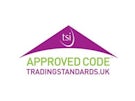On one hand, 2015 has been a good year for property with prices rising – in double figures in some areas – and with rents also rising along with wage growth. However, from a costs and tax perspective, it hasn’t been so great.
So what are the challenges and what can landlord and investors do to maximise returns in 2016?
First, the good news is that property prices should carry on rising in most areas, helping to boost capital growth. Forecast wise, a recent report produced by the National Association of Estate Agents (NAEA) and Association of Residential Letting Agents (ARLA) in association with the Centre for Economic and Business Research suggests that property prices over the next ten years will grow in excess of 4% a year. This is good news if you are gearing your property investments, but bear in mind areas such as Scotland and Northern Ireland among others are predicted to grow at a slightly slower rate.
Even though expanding your portfolio will come with an increased cost of 3% stamp duty from April 2016, this is tax deductible when you sell and, when you view forecasts for capital growth, this means it is unlikely to impact too harshly on long term profits.
The second piece of good news is that your rents should also rise. We know from producing the Belvoir Rental Index since 2008 that rents only tend to rise when wage growth is outstripping inflation. The Office of National Statistics reported in November 2015 that “Adjusted for inflation, weekly earnings increased by 1.9% compared with 2014. This is the first increase since 2008, and is due to a combination of growth in average earnings and a low level of inflation (the CPI fell by 0.1% in the year to April 2015)” and along with this growth we’ve seen rents rise, almost across the board.
Forecasts for 2016 from the Belvoir Rental Index suggest rental income could grow by an average of 3% across the UK, with growth expected to be highest in Yorkshire (+4%) and lowest, but still positive, in the West Midlands and North West (+2%).
This is much-needed growth, bearing in mind that rents for many landlords didn’t increase that much during the recession, if at all. So if you haven’t increased your rents to existing tenants for some years, now is the time to chat to your local Belvoir office and make sure you are getting market rate.
What is also helpful about rents increasing along with wage rises is it means if you are a higher rate tax payer, you can now start to build in a buffer against the loss of tax relief on mortgage payments over the next few years (starting from 2017).
And to help reduce your costs, your financing options are another major consideration for 2016. If you are holding Buy-to-Let properties with cash, it isn’t necessarily the best way to maximise your returns. Secondly with buy-to-let mortgage rates being unbelievably low at the moment, if you haven’t spoken to a broker over the last six to 12 months, then it’s worth doing so as mortgaging a property and making sure you are on the right rate can seriously boost your returns.
It’s worth doing this sooner rather than later though as there are two changes expected to impact on buy-to-let finance in 2016. The first is some buy-to-let mortgages are going to come under new, stricter, consumer regulations in March 2016 and secondly there is currently a consultation about increasing the Bank of England’s control over buy-to-let lending. Both of these could impact on the costs of financing your property or portfolio, so the sooner you secure a deal that’s right for you, the more you can protect yourself from increased costs.
So despite the many ‘doom and gloom’ stories about buy-to-let and the constant increased costs from new legislation changes, it does look like 2016 will be a better year for Buy-to-let than most people are predicting thanks to a strong property market and economic growth driving wages forward.






